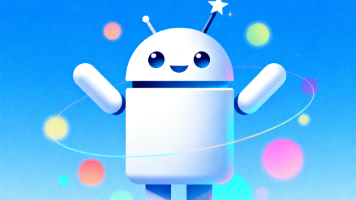深入解析 Android 常用布局:LinearLayout、RelativeLayout 与 ConstraintLayout(含面试题)
在 Android 开发中,布局(Layout)是构建用户界面的基础,它决定了 View 的排列方式和位置关系。最常用的三大布局分别是(线性布局)、(相对布局)和(约束布局)。本文将从布局特性、使用场景、实战案例到性能对比全面解析这三种布局,并整理高频面试题,帮助开发者在实际开发中选择合适的布局方案。
在 Android 开发中,布局(Layout)是构建用户界面的基础,它决定了 View 的排列方式和位置关系。最常用的三大布局分别是LinearLayout(线性布局)、RelativeLayout(相对布局)和ConstraintLayout(约束布局)。本文将从布局特性、使用场景、实战案例到性能对比全面解析这三种布局,并整理高频面试题,帮助开发者在实际开发中选择合适的布局方案。
一、LinearLayout(线性布局):简单直观的线性排列
LinearLayout是最基础、最常用的布局之一,它将子 View 按水平或垂直方向线性排列,适用于简单的 UI 结构。
1. 核心特性
- 排列方向:通过
android:orientation指定,可选horizontal(水平)或vertical(垂直),默认水平; - 权重分配:通过
android:layout_weight实现剩余空间的比例分配,常用于自适应布局; - 对齐方式:通过
android:gravity(子 View 在布局内的对齐)和android:layout_gravity(子 View 自身在父布局中的对齐)控制位置。
2. 常用属性
| 属性名 | 作用 | 可选值示例 |
|---|---|---|
android:orientation |
设置排列方向 | horizontal(水平)、vertical(垂直) |
android:gravity |
控制子 View 在布局内的对齐方式 | center、left、right、top、bottom、center_vertical等 |
android:layout_weight |
子 View 的权重(仅在orientation方向有效) |
数值(如1、0.5) |
android:layout_width |
子 View 宽度 | match_parent、wrap_content、固定值(如100dp) |
android:layout_height |
子 View 高度 | 同上 |
3. 实战案例:登录界面(垂直排列)
<!-- res/layout/activity_login.xml -->
<LinearLayout xmlns:android="http://schemas.android.com/apk/res/android"
android:layout_width="match_parent"
android:layout_height="match_parent"
android:orientation="vertical"
android:padding="16dp"
android:gravity="center_horizontal"> <!-- 子View水平居中 -->
<!-- 标题文本 -->
<TextView
android:id="@+id/tv_title"
android:layout_width="wrap_content"
android:layout_height="wrap_content"
android:text="用户登录"
android:textSize="24sp"
android:layout_marginBottom="30dp"/>
<!-- 账号输入框 -->
<EditText
android:id="@+id/et_username"
android:layout_width="match_parent"
android:layout_height="wrap_content"
android:hint="请输入账号"
android:inputType="text"
android:layout_marginBottom="10dp"/>
<!-- 密码输入框 -->
<EditText
android:id="@+id/et_password"
android:layout_width="match_parent"
android:layout_height="wrap_content"
android:hint="请输入密码"
android:inputType="textPassword"
android:layout_marginBottom="20dp"/>
<!-- 登录按钮 -->
<Button
android:id="@+id/btn_login"
android:layout_width="match_parent"
android:layout_height="wrap_content"
android:text="登录"/>
</LinearLayout>
4. 权重(layout_weight)的高级用法
layout_weight用于分配父布局的剩余空间,计算公式为:
子View实际尺寸 = 自身尺寸 + 剩余空间 × (自身权重 / 总权重)
示例:水平方向三等分布局
<LinearLayout
android:layout_width="match_parent"
android:layout_height="100dp"
android:orientation="horizontal">
<!-- 权重1,宽度设为0dp(完全由权重决定) -->
<View
android:layout_width="0dp"
android:layout_height="match_parent"
android:layout_weight="1"
android:background="#FF0000"/>
<View
android:layout_width="0dp"
android:layout_height="match_parent"
android:layout_weight="1"
android:background="#00FF00"/>
<View
android:layout_width="0dp"
android:layout_height="match_parent"
android:layout_weight="1"
android:background="#0000FF"/>
</LinearLayout>
注意:使用权重时,建议将对应方向的layout_width(水平)或layout_height(垂直)设为0dp,避免自身尺寸影响权重分配。
5. 适用场景与局限性
- 适用场景:简单的线性排列(如列表项、登录表单、按钮组);需要按比例分配空间的布局(如分割线、多列展示)。
- 局限性:复杂布局需多层嵌套,可能导致性能问题(过度绘制、测量耗时);无法实现复杂的相对位置关系(如 “View B 在 View A 右侧且下方”)。
二、RelativeLayout(相对布局):灵活的相对位置排列
RelativeLayout允许子 View 通过相对其他 View 或父布局的位置进行排列,灵活性远高于LinearLayout,适用于中等复杂度的 UI。
1. 核心特性
- 相对定位:子 View 可相对于父布局(如
alignParentLeft)或其他子 View(如toRightOf)定位; - 消除嵌套:相比
LinearLayout,可减少布局嵌套层级,优化性能; - 居中对齐:支持多种居中方式(如
centerInParent、centerHorizontal)。
2. 常用属性(按类别划分)
(1)相对于父布局定位
| 属性名 | 作用 |
|---|---|
android:alignParentLeft |
与父布局左边缘对齐 |
android:alignParentRight |
与父布局右边缘对齐 |
android:alignParentTop |
与父布局上边缘对齐 |
android:alignParentBottom |
与父布局下边缘对齐 |
android:centerInParent |
在父布局中居中(水平 + 垂直) |
android:centerHorizontal |
在父布局中水平居中 |
android:centerVertical |
在父布局中垂直居中 |
(2)相对于其他 View 定位(需指定目标 View 的 id)
| 属性名 | 作用 |
|---|---|
android:layout_toLeftOf |
位于目标 View 的左侧 |
android:layout_toRightOf |
位于目标 View 的右侧 |
android:layout_above |
位于目标 View 的上方 |
android:layout_below |
位于目标 View 的下方 |
android:layout_alignLeft |
与目标 View 的左边缘对齐 |
android:layout_alignRight |
与目标 View 的右边缘对齐 |
android:layout_alignTop |
与目标 View 的上边缘对齐 |
android:layout_alignBottom |
与目标 View 的下边缘对齐 |
(3)边距属性(所有布局通用)
| 属性名 | 作用 |
|---|---|
android:layout_margin |
所有方向的外边距 |
android:layout_marginLeft |
左外边距 |
android:layout_marginRight |
右外边距 |
android:layout_marginTop |
上外边距 |
android:layout_marginBottom |
下外边距 |
3. 实战案例:社交应用个人信息卡片
<!-- res/layout/item_user_card.xml -->
<RelativeLayout xmlns:android="http://schemas.android.com/apk/res/android"
android:layout_width="match_parent"
android:layout_height="120dp"
android:padding="16dp"
android:background="#F5F5F5">
<!-- 头像(左上角) -->
<ImageView
android:id="@+id/iv_avatar"
android:layout_width="80dp"
android:layout_height="80dp"
android:layout_alignParentLeft="true"
android:layout_alignParentTop="true"
android:src="@mipmap/ic_launcher"
android:scaleType="centerCrop"/>
<!-- 用户名(头像右侧,顶部对齐) -->
<TextView
android:id="@+id/tv_name"
android:layout_width="wrap_content"
android:layout_height="wrap_content"
android:layout_toRightOf="@id/iv_avatar"
android:layout_alignTop="@id/iv_avatar"
android:layout_marginLeft="10dp"
android:text="张三"
android:textSize="18sp"
android:textStyle="bold"/>
<!-- 个性签名(用户名下方) -->
<TextView
android:id="@+id/tv_signature"
android:layout_width="wrap_content"
android:layout_height="wrap_content"
android:layout_below="@id/tv_name"
android:layout_toRightOf="@id/iv_avatar"
android:layout_marginLeft="10dp"
android:layout_marginTop="5dp"
android:text="热爱生活,热爱编程"
android:textSize="14sp"
android:textColor="#666666"/>
<!-- 关注按钮(右上角) -->
<Button
android:id="@+id/btn_follow"
android:layout_width="wrap_content"
android:layout_height="wrap_content"
android:layout_alignParentRight="true"
android:layout_alignParentTop="true"
android:text="关注"/>
</RelativeLayout>
4. 适用场景与局限性
- 适用场景:中等复杂度的 UI(如卡片布局、个人信息页);需要子 View 之间有相对位置关系的布局(如 “A 在 B 右侧,C 在 A 下方”)。
- 局限性:复杂布局(如多元素约束关系)可能导致规则冲突(需仔细管理依赖关系);相比
ConstraintLayout,缺少部分高级约束功能(如比例约束、链条约束)。
三、ConstraintLayout(约束布局):高效灵活的新一代布局
ConstraintLayout是 Android Studio 官方推荐的布局,集成了LinearLayout和RelativeLayout的优点,支持灵活的约束关系,可实现复杂布局且无需嵌套,是性能最优的布局方案之一。
1. 核心特性
- 无嵌套布局:所有子 View 在同一层级,减少布局深度,优化测量和绘制性能;
- 多类型约束:支持相对位置、居中对齐、比例缩放、链条约束等;
- 可视化编辑:Android Studio 的 Design 视图提供直观的拖拽和约束设置,降低开发难度;
- 适配性强:支持百分比尺寸、宽高比约束,轻松适配不同屏幕。
2. 核心约束属性(常用)
(1)相对位置约束(类似 RelativeLayout)
| 属性名 | 作用 |
|---|---|
app:layout_constraintLeft_toLeftOf |
左边缘与目标左边缘对齐 |
app:layout_constraintLeft_toRightOf |
左边缘与目标右边缘对齐 |
app:layout_constraintRight_toLeftOf |
右边缘与目标左边缘对齐 |
app:layout_constraintRight_toRightOf |
右边缘与目标右边缘对齐 |
app:layout_constraintTop_toTopOf |
上边缘与目标上边缘对齐 |
app:layout_constraintTop_toBottomOf |
上边缘与目标下边缘对齐 |
app:layout_constraintBottom_toTopOf |
下边缘与目标上边缘对齐 |
app:layout_constraintBottom_toBottomOf |
下边缘与目标下边缘对齐 |
目标可以是父布局(parent)或其他 View 的 id,例如:
app:layout_constraintLeft_toRightOf="@id/iv_avatar"(左边缘与头像右边缘对齐)
(2)居中与偏移约束
| 属性名 | 作用 |
|---|---|
app:layout_constraintHorizontal_bias |
水平方向偏移(0~1,0 靠左,1 靠右) |
app:layout_constraintVertical_bias |
垂直方向偏移(0~1,0 靠上,1 靠下) |
app:layout_constraintCenterInParent |
在父布局中居中(水平 + 垂直) |
app:layout_constraintCenterHorizontal |
水平居中 |
app:layout_constraintCenterVertical |
垂直居中 |
示例:水平方向居中偏左 20%
app:layout_constraintLeft_toLeftOf="parent"
app:layout_constraintRight_toRightOf="parent"
app:layout_constraintHorizontal_bias="0.2"
(3)尺寸与比例约束
| 属性名 | 作用 |
|---|---|
app:layout_constraintDimensionRatio |
宽高比(如1:1正方形,16:9宽屏) |
android:layout_width="0dp" |
宽度由约束决定(类似match_constraint) |
android:layout_height="0dp" |
高度由约束决定 |
示例:宽高比 16:9 的图片
<ImageView
android:layout_width="0dp"
android:layout_height="0dp"
app:layout_constraintLeft_toLeftOf="parent"
app:layout_constraintRight_toRightOf="parent"
app:layout_constraintTop_toTopOf="parent"
app:layout_constraintDimensionRatio="16:9"/>
(4)链条约束(类似 LinearLayout 的权重)
将多个 View 通过约束连接成 “链条”,可设置水平或垂直方向的分布方式:
app:layout_constraintHorizontal_chainStyle(水平链条)app:layout_constraintVertical_chainStyle(垂直链条)
链条样式:
spread:均匀分布(默认);spread_inside:两端贴近父布局,中间均匀分布;packed:紧密排列,可通过bias调整整体偏移。
示例:水平链条三等分
<ConstraintLayout
android:layout_width="match_parent"
android:layout_height="100dp">
<View
android:id="@+id/view1"
android:layout_width="0dp"
android:layout_height="match_parent"
android:background="#FF0000"
app:layout_constraintLeft_toLeftOf="parent"
app:layout_constraintRight_toLeftOf="@id/view2"
app:layout_constraintHorizontal_chainStyle="spread"/>
<View
android:id="@+id/view2"
android:layout_width="0dp"
android:layout_height="match_parent"
android:background="#00FF00"
app:layout_constraintLeft_toRightOf="@id/view1"
app:layout_constraintRight_toLeftOf="@id/view3"/>
<View
android:id="@+id/view3"
android:layout_width="0dp"
android:layout_height="match_parent"
android:background="#0000FF"
app:layout_constraintLeft_toRightOf="@id/view2"
app:layout_constraintRight_toRightOf="parent"/>
</ConstraintLayout>
3. 实战案例:新闻详情页布局
<!-- res/layout/activity_news_detail.xml -->
<androidx.constraintlayout.widget.ConstraintLayout xmlns:android="http://schemas.android.com/apk/res/android"
xmlns:app="http://schemas.android.com/apk/res-auto"
android:layout_width="match_parent"
android:layout_height="match_parent">
<!-- 新闻标题 -->
<TextView
android:id="@+id/tv_title"
android:layout_width="0dp"
android:layout_height="wrap_content"
android:text="Android ConstraintLayout 完全指南"
android:textSize="20sp"
android:textStyle="bold"
android:layout_margin="16dp"
app:layout_constraintLeft_toLeftOf="parent"
app:layout_constraintRight_toRightOf="parent"
app:layout_constraintTop_toTopOf="parent"/>
<!-- 新闻图片(宽高比4:3) -->
<ImageView
android:id="@+id/iv_news"
android:layout_width="0dp"
android:layout_height="0dp"
android:src="@mipmap/ic_launcher"
android:scaleType="centerCrop"
android:layout_marginLeft="16dp"
android:layout_marginRight="16dp"
app:layout_constraintLeft_toLeftOf="parent"
app:layout_constraintRight_toRightOf="parent"
app:layout_constraintTop_toBottomOf="@id/tv_title"
app:layout_constraintDimensionRatio="4:3"/>
<!-- 发布时间 -->
<TextView
android:id="@+id/tv_time"
android:layout_width="wrap_content"
android:layout_height="wrap_content"
android:text="2023-10-01 12:00"
android:textSize="12sp"
android:textColor="#999999"
android:layout_marginTop="10dp"
android:layout_marginLeft="16dp"
app:layout_constraintLeft_toLeftOf="parent"
app:layout_constraintTop_toBottomOf="@id/iv_news"/>
<!-- 作者 -->
<TextView
android:id="@+id/tv_author"
android:layout_width="wrap_content"
android:layout_height="wrap_content"
android:text="作者:Android开发指南"
android:textSize="12sp"
android:textColor="#999999"
android:layout_marginTop="10dp"
android:layout_marginRight="16dp"
app:layout_constraintRight_toRightOf="parent"
app:layout_constraintTop_toBottomOf="@id/iv_news"/>
<!-- 新闻内容 -->
<TextView
android:id="@+id/tv_content"
android:layout_width="0dp"
android:layout_height="wrap_content"
android:text="ConstraintLayout是Android官方推荐的布局,具有灵活、高效等特点..."
android:textSize="16sp"
android:layout_margin="16dp"
app:layout_constraintLeft_toLeftOf="parent"
app:layout_constraintRight_toRightOf="parent"
app:layout_constraintTop_toBottomOf="@id/tv_time"/>
</androidx.constraintlayout.widget.ConstraintLayout>
4. 适用场景与优势
- 适用场景:复杂 UI 布局(如首页、详情页);需要减少布局嵌套、优化性能的场景;多屏幕适配需求高的应用。
- 核心优势:
- 性能优化:无嵌套层级,减少测量和绘制次数;
- 灵活性:支持多种约束关系,满足复杂布局需求;
- 适配性:通过比例约束、链条等功能,轻松适配不同尺寸屏幕;
- 开发效率:可视化编辑工具降低布局编写难度。
四、三大布局的性能对比与选择建议
1. 性能对比(关键指标)
| 布局类型 | 嵌套层级 | 测量复杂度 | 绘制效率 | 适用复杂度 |
|---|---|---|---|---|
| LinearLayout | 高(复杂布局需多层嵌套) | 低(线性遍历) | 中(嵌套导致过度绘制) | 简单 |
| RelativeLayout | 中(部分减少嵌套) | 中(需处理相对关系,可能二次测量) | 中 | 中等 |
| ConstraintLayout | 低(无嵌套) | 低(单次测量) | 高(无过度绘制) | 简单到复杂 |
结论:ConstraintLayout性能最优,尤其是复杂布局;LinearLayout和RelativeLayout在简单场景下性能差异不大。
2. 布局选择建议
- 简单线性排列(如列表项、按钮组):优先用
LinearLayout,代码简洁; - 中等复杂度相对位置(如卡片布局):可用
RelativeLayout,但推荐ConstraintLayout(为后续扩展预留空间); - 复杂布局(如首页、详情页):强制用
ConstraintLayout,避免嵌套,优化性能; - 多屏幕适配:优先用
ConstraintLayout(比例约束、链条等功能更适配不同屏幕)。
五、布局优化的通用技巧
- 减少布局嵌套:嵌套层级越多,测量和绘制耗时越长,尽量控制在 3 层以内(
ConstraintLayout天然无嵌套); - 使用 merge 标签:减少根布局冗余,例如在
include复用布局时,用merge替代父布局;
-
<!-- res/layout/merge_layout.xml --> <merge xmlns:android="http://schemas.android.com/apk/res/android"> <TextView .../> <Button .../> </merge> - 使用 ViewStub 延迟加载:对非首屏或条件性显示的布局(如错误提示),用
ViewStub延迟加载,减少初始加载时间;
<ViewStub
android:id="@+id/view_stub"
android:layout_width="match_parent"
android:layout_height="wrap_content"
android:layout="@layout/error_layout"/>
代码中加载:
-
ViewStub stub = findViewById(R.id.view_stub); stub.inflate(); // 加载布局 - 避免过度绘制:移除不必要的背景(如父布局和子 View 重复设置背景),通过开发者选项中的 “过度绘制” 工具检测;
- 复用布局:通过
include标签复用相同布局(如标题栏、底部导航),减少代码冗余。
六、高频面试题(含答案)
1. LinearLayout、RelativeLayout、ConstraintLayout 的核心区别是什么?
- LinearLayout:按水平 / 垂直方向线性排列,依赖嵌套实现复杂布局,适合简单 UI;
- RelativeLayout:通过相对位置(父布局或其他 View)排列,可减少部分嵌套,适合中等复杂度 UI;
- ConstraintLayout:通过约束关系排列,支持无嵌套布局,集成前两者优点,性能最优,适合所有复杂度 UI(尤其是复杂布局)。
2. LinearLayout 的 layout_weight 属性原理是什么?使用时需注意什么?
- 原理:
layout_weight用于分配父布局的剩余空间,计算公式为:子View实际尺寸 = 自身尺寸 + 剩余空间 × (自身权重 / 总权重); - 注意事项:
- 使用时建议将对应方向的
layout_width(水平)或layout_height(垂直)设为0dp,避免自身尺寸影响权重分配; - 权重总和为 0 时,所有子 View 按
wrap_content显示,剩余空间不分配。
- 使用时建议将对应方向的
3. 为什么 ConstraintLayout 比 LinearLayout 和 RelativeLayout 性能更好?
- 无嵌套层级:所有子 View 在同一层级,减少测量和绘制的递归次数(LinearLayout 和 RelativeLayout 复杂布局需多层嵌套);
- 高效的测量机制:ConstraintLayout 只需一次测量即可确定所有 View 的位置和尺寸,而 RelativeLayout 可能需要二次测量(处理相对关系冲突);
- 减少过度绘制:无嵌套避免了多层 View 叠加导致的过度绘制,提升 GPU 渲染效率。
4. 如何使用 ConstraintLayout 实现类似 LinearLayout 的权重分配效果?
通过链条约束实现,步骤如下:
- 将多个 View 通过约束连接成链条(如 A 的右边缘连 B 的左边缘,B 的右边缘连 C 的左边缘);
- 为链条设置
layout_constraintHorizontal_chainStyle(水平)或layout_constraintVertical_chainStyle(垂直); - 可选值:
spread(均匀分布,类似权重)、spread_inside(两端贴边,中间均匀)、packed(紧密排列); - 子 View 的
layout_width(水平)或layout_height(垂直)设为0dp(由约束决定尺寸)。
5. 布局优化的常用方法有哪些?
- 减少嵌套层级:优先使用 ConstraintLayout,避免 LinearLayout 和 RelativeLayout 的多层嵌套;
- 复用布局:通过
include标签复用相同布局(如标题栏); - 延迟加载:用
ViewStub加载非首屏或条件性显示的布局; - 移除冗余背景:避免父布局和子 View 重复设置背景,减少过度绘制;
- 使用 merge 标签:在
include布局时减少根布局冗余; - 合理设置尺寸:避免
match_parent导致的过度测量,优先用wrap_content和约束布局。
6. RelativeLayout 的二次测量问题是什么?如何避免?
- 二次测量:RelativeLayout 在测量子 View 时,若子 View 之间存在相互依赖的相对关系(如 A 在 B 右侧,B 在 A 左侧),可能需要进行两次测量才能确定所有子 View 的尺寸,增加耗时;
- 避免方式:
- 简化子 View 的依赖关系,避免循环依赖;
- 改用 ConstraintLayout,其测量机制更高效,无需二次测量。
7. 如何实现一个适配不同屏幕尺寸的布局?
- 使用 dp 单位:尺寸单位用
dp(密度无关像素),文字用sp(缩放无关像素); - ConstraintLayout 比例约束:通过
layout_constraintDimensionRatio设置宽高比(如 16:9),适应不同屏幕; - 权重 / 链条:用 LinearLayout 的
layout_weight或 ConstraintLayout 的链条实现自适应分配空间; - 限定符资源:为不同屏幕尺寸(如
sw600dp)或方向(land)提供不同布局文件; - 避免硬编码尺寸:优先用
wrap_content、match_parent或约束布局,减少固定尺寸(如100dp)。
8. include 标签和 merge 标签的作用是什么?如何配合使用?
- include 标签:用于复用布局文件,减少代码冗余,例如:
-
<include layout="@layout/title_bar"/> - merge 标签:作为布局的根标签,当被
include时,会将内部子 View 直接合并到父布局中,减少嵌套层级; - 配合使用:在被
include的布局中用merge作为根标签,替代LinearLayout等父布局,例如:
-
引入后,子 View 会直接添加到父布局中,无额外层级。<!-- title_bar.xml --> <merge xmlns:android="http://schemas.android.com/apk/res/android"> <TextView android:id="@+id/tv_title" .../> <Button android:id="@+id/btn_back" .../> </merge>
9. ViewStub 的作用是什么?与 VISIBLE/GONE 有何区别?
- 作用:延迟加载布局,初始时不占用内存和绘制资源,仅在调用
inflate()或设置visibility=VISIBLE时才加载布局; - 与 VISIBLE/GONE 的区别:
GONE:布局在初始化时已加载,只是不显示,仍占用内存;ViewStub:未加载时完全不占用内存,适合加载频率低的布局(如错误提示、空数据页面)。
10. 为什么推荐使用 ConstraintLayout 作为默认布局?
- 性能最优:无嵌套层级,测量和绘制效率高于 LinearLayout 和 RelativeLayout;
- 功能全面:支持线性排列、相对位置、比例约束等所有布局功能,替代前两者;
- 适配性强:通过链条、比例等特性,轻松适配不同屏幕尺寸;
- 开发高效:Android Studio 提供可视化编辑工具,拖拽即可设置约束,降低布局编写难度;
- 官方推荐:Google 官方明确推荐使用 ConstraintLayout 作为主要布局,后续优化和新功能优先支持。
LinearLayout、RelativeLayout 和 ConstraintLayout 各有特点,但其发展趋势是ConstraintLayout 逐步替代前两者,成为所有场景的首选布局。掌握 ConstraintLayout 的约束关系、链条、比例等核心功能,不仅能提升布局性能,还能简化复杂 UI 的开发流程。

openvela 操作系统专为 AIoT 领域量身定制,以轻量化、标准兼容、安全性和高度可扩展性为核心特点。openvela 以其卓越的技术优势,已成为众多物联网设备和 AI 硬件的技术首选,涵盖了智能手表、运动手环、智能音箱、耳机、智能家居设备以及机器人等多个领域。
更多推荐
 已为社区贡献1条内容
已为社区贡献1条内容






所有评论(0)